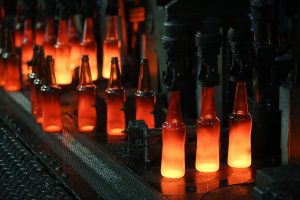I stay with my family in a rural part of Bangalore in India, and we often face a series of power cuts that last for as long as 4 hours. What adds to our woes is that these power cuts are unannounced and occur abruptly. We had our ‘moment of truth’ when the pandemic cajoled all of us to stay at home and due to restrictions, our home had to be converted into a home office and a home school. This is not just my story but there are many like me under this predicament.

Sustainability is the cynosure of all eyes, and hence, the world is rapidly and rampantly adopting greener technologies. Several manufacturers across the globe have ambitious plans, leading to emergence of new trends. One such trend is the increasing adoption of electric vehicles (EVs). Apart from this, extensive utilisation of electronic devices or appliances in maximum capacity is fuelling the demand of electricity. India’s electricity consumption has jumped almost 17 percent in the last two months in comparison to the same time in recent years.
But the question is whether we have the right infrastructure to handle this increasing demand of electricity or not.
I feel we still have a long way to go and we need a solution that would significantly ramp up the power capacity and would be highly sustainable and cost-efficient.
What is LVDC and why is it the need of the hour?
Renewable resources like solar power can be utilized to produce electricity. This is done with the help of Photovoltaic (PV) modules. The PV modules produce electricity in form of Direct Current (DC). But since our house supply is 240V/ 415V AC (Alternating Current), it is imperative to convert this DC voltage to AC voltage. This conversion simply means an energy loss of 5% to 15%. A Low Voltage Direct Current (LVDC) is a technology through which the electricity produced by renewable sources is consumed in the same form as it is produced in DC.
 Just by looking around, we would realise that electronics like LED lights, computers, TVs, mobile phones, speaker systems, tablets, even some vehicles now operate in DC (Direct Current). It would be wiser to make the systems simpler without having to internally convert AC to DC.
Just by looking around, we would realise that electronics like LED lights, computers, TVs, mobile phones, speaker systems, tablets, even some vehicles now operate in DC (Direct Current). It would be wiser to make the systems simpler without having to internally convert AC to DC.
LVDC system brings simplicity to how electricity is produced and consumed. Consumers get access to improved power quality at safe voltage levels. With DC available throughout the house, consumers would be able to keep pace with, adapt and relish all the significant developments in the electronics sector.
However, it’s an ongoing journey and it is important to look at some challenges:
- What about fridges, washing machines, microwaves? All these heavy devices work on AC.
- There are multiple voltages at which the DC equipment works. What would be the standard voltage system for LVDC?
There are multiple manufacturers who are working on finding a solution to obviate the challenges, for example, there are many refrigerators that run on DC, the option is not as wide as we have for AC.
Standardization organizations like IEC1, BIS, IEEE2 have been engrossed in this field for more than 5 years now. Already, there are multiple sites across the world that have been converted to pure DC sites 3
DC systems B.V., part of Schneider Electric is dedicatedly working on LVDC systems.
You might ask why now? It’s because LVDC is on the horizon and is about to take off. By saving the energy lost in the conversion and by providing simple, efficient, affordable electricity, it fast tracks energy independence and changes the lives of millions. Promoting clean and safe electrical energy and bringing in energy efficiency, are no doubt contributors to sustainability and decarbonization, which are some of our dire needs today.
So next time you plan to upgrade your house /office electricity, think about LVDC systems.
About Rachna Verma

Rachna Verma, General Manager, Systems & Test, DEVS – Schneider Electric is Technical Leader at the GIGA Labs based out at Innovare Campus at BGRT, India.
She is recognized for her extensive experience in verification, validation and certification of LV switchgears, LV switchboards, Smart Energy Meters & Micro Data centers. She also has proven track record for Installation and commissioning of various electrical labs. She is an active member of BIS Technical committee for Switches and sockets standardization committee. She is also a distinguished External Auditor for ISO/IEC 17025 for testing laboratories.



